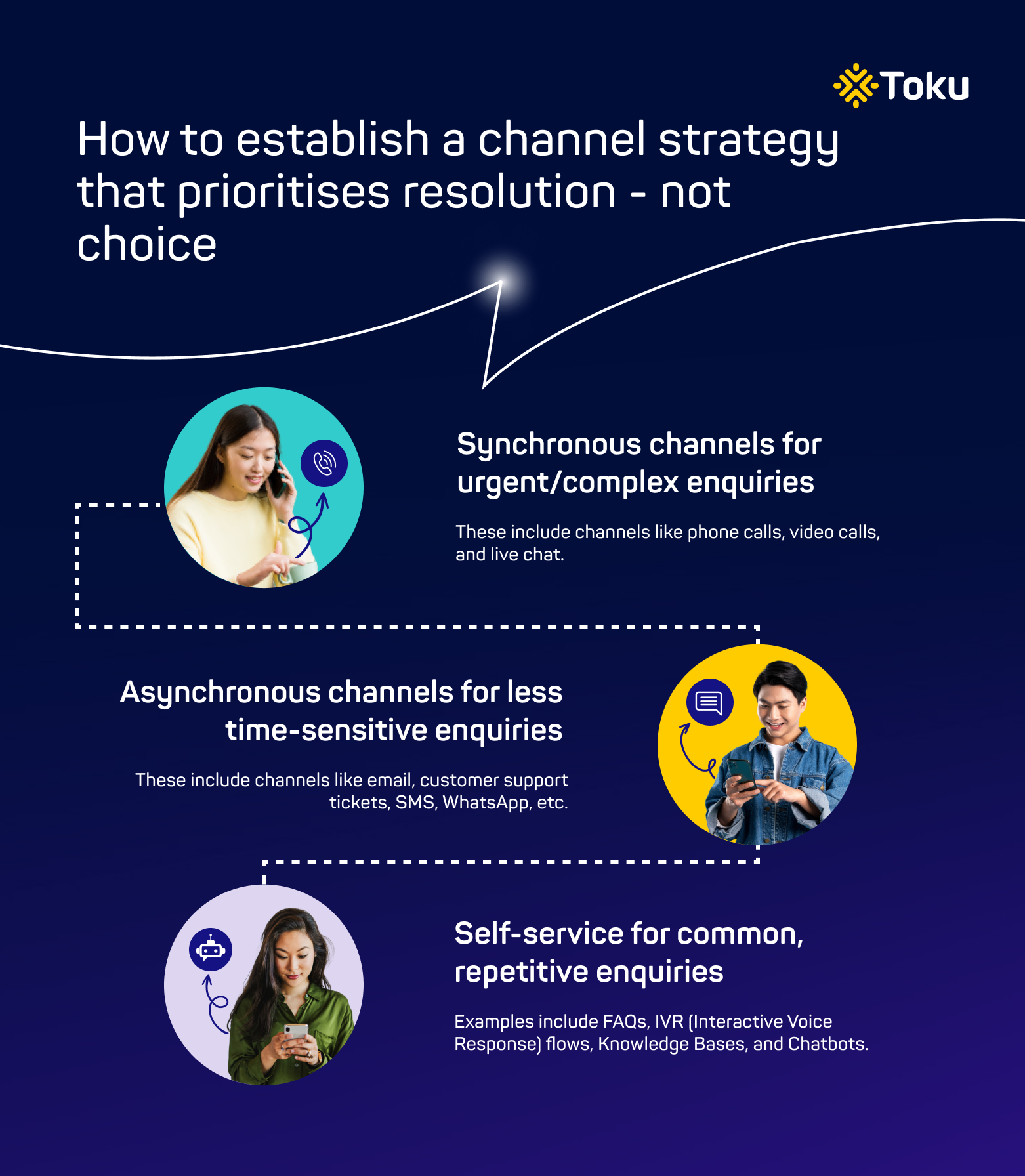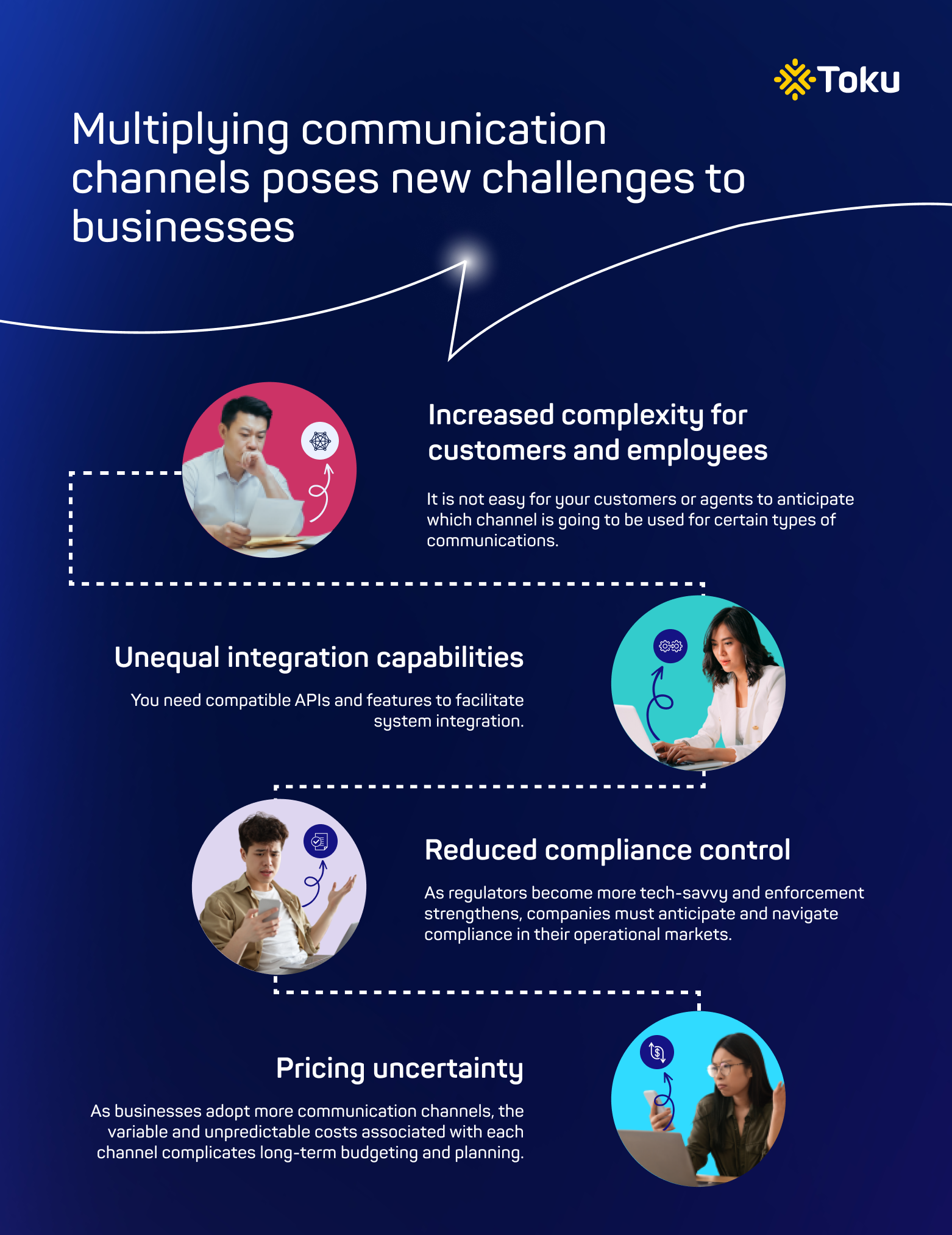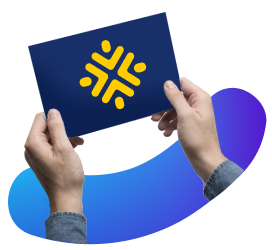Cloud communications and SIP trunking are a cost-effective way for businesses to connect globally by establishing a hyperlocal presence overseas without physically being there.
In today’s fast-paced digital world, businesses are dealing with a perfect storm of customer care challenges.
Soaring customer expectations of personalised interactions and mounting call volumes exert immense pressure on support teams to deliver prompt, customised and efficient service.
Meanwhile, employee attrition and difficulties in replacing skilled staff exacerbate the situation.
And to top it all off, evolving technologies like chatbots are still not up to the task of meeting customer expectations.
After all, in our Consumer Engagement Report 2022, we found that Singapore consumers ranked chatbots as their least preferred communication channel with private companies.
Clearly, ‘more technology’ is NOT a panacea to this trifecta of customer support woes.
We believe the answer lies in using data-enriched communication channels.
In this blog post, we explore how businesses can strike the right balance between empathy and efficiency by harnessing the power of data-enriched communications.
But first, let’s get one question out of the way.
Why are data-enriched communication channels no longer a choice, but a must-have?
Because customers have spoken!
- According to the Zendesk CX Trends 2023 report, 59% of consumers believe businesses should use the data they collect about them to personalise their experiences.
- Furthermore, 70% expect anyone they interact with to have full context.
Having seamless integration of data across various communication channels can allow a business to understand customers’ preferences, needs, and previous interactions, and tailor their support and services to deliver a more empathetic and efficient experience.
Additionally, data-enriched communication channels enable businesses to anticipate potential issues and proactively address them, further reducing customer frustration and elevating their overall experience.
Use data to understand and escalate high-priority enquiries
You can utilise data analytics to determine the best channels for different enquiry types.
Ultimately though, your channel strategy should prioritise issue resolution.

Asynchronous channels are useful for less critical issues, while synchronous ones handle urgent and complex situations. By analysing historical communications data, you can construct escalation paths, facilitating a smooth shift from asynchronous to synchronous channels for high-priority issues.
Interaction data can also be useful to facilitate data-assisted agent transition.
For example, if a customer starts a conversation about a technical issue with one agent via email and then decides to call the customer service line for quicker resolution, the agent on the call could have access to the information in the email thread. This allows the second agent to pick up exactly where the first left off, without requiring the customer to repeat any information.
Takeaway: Understanding the customer’s journey through data ensures continuity in service and a streamlined response to urgent enquiries.
Ensure customer data is up-to-date for greater personalisation
Brands often find themselves overly ambitious, attempting to implement intricate customer data strategies before mastering the fundamentals. Personalisation, in essence, starts with basic knowledge of who your customer is, underscoring the importance of accurate contact details.
A frequently overlooked fact is that information can swiftly become outdated or incorrect. Thus, it’s not about the volume or diversity of customer data you’re collecting, but rather about your processes to ensure you continually have the right information.
The Pareto Principle applies aptly here: a relatively small number of data points can provide the 20% of personalisation that satisfies 80% of your customers.
Takeaway: Prioritising the continuous updating of customer data enables efficient personalisation through automation.
Streamline communications data with an app
Diversifying with multiple communication channels can lead to mixed results, particularly when the channels’ activity levels are unclear.
That’s because adding on more communication channels creates new challenges for a business.
Here are some of the most common ones:

That’s why before adding on a new communication channel, a brand must evaluate the channel’s coverage and daily usage, comparing it to an alternative with similar coverage.
Then, they need to ask themselves, “Is there a genuine need for both?”
When comparing many of the chat and OTT platforms with traditional telco channels, the latter often has a significant advantage – ubiquity.
This is because every customer has a mobile number, eliminating concerns about reachability. With chat and OTT platforms, you must thoroughly measure and assess based on the use cases.
If you have an app, the preferred strategy should be to channel all communication through your brand’s app once the customer is onboard.
This streamlined approach not only improves communication efficiency but also consolidates data collection. When communications are integrated through your app, the data you collect is more accurate and reliable, reinforcing the importance of maintaining up-to-date customer information.
This forms a solid foundation for efficient, and more empathetic customer experiences.
Pro tip: With Toku In-App Voice solution, you can empower customers to call your contact centre directly without leaving your app and streamline how you collect customer data.
Conclusion
The integration of data-enriched communication into your customer service strategy isn’t just an upgrade – it’s an essential element for success in today’s customer-centric business world.
While the technology continues to evolve, it’s the human touch enhanced by insightful data that truly makes a difference.
Let’s not lose sight of this as we continue to navigate the future of customer support.
 V K Sanjeed
V K Sanjeed 


 Girish Dharmaraj
Girish Dharmaraj 
 Ana Castrillon
Ana Castrillon 